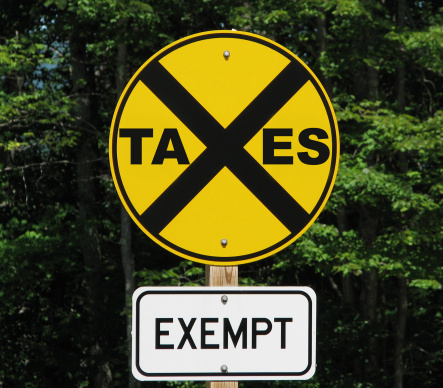Do you own property outside of the United States? Are you thinking about investing in offshore real estate? Are you an offshore real estate mogul looking to reduce or eliminate your US taxes? This article will cover all areas of US taxation of offshore real estate and provide insider tips and techniques to get your US tax bill under control.
So long as you carry a US passport, the IRS wants you pay tax when you sell offshore real estate. US citizens are taxed on their worldwide income and there are very few offshore tax breaks for capital gains and the passive income. Thus, it doesn’t matter whether you are living in the good ‘ole U S of A or abroad, passive income and capital gains are taxable as earned.
- Active investors, real estate professionals, and those who buy in a retirement account are exceptions to the rule.
This means that offshore real estate is taxed the same as domestic real estate (with the exception of depreciation). The same tax rates apply, the same deductions for expenses are allowed, and the same credits are available. I will describe the best of these below.
In most cases, if buy a property in Panama and sell it after 3 years, you have a long term capital gain in the US, and owe tax at 20% to 23.8%. For the rest of this article, I will assume a long term US rate of 20%.
Offshore Real Estate and the Foreign Tax Credit
This doesn’t mean you must pay double tax, first in the country where the property is located and then again in the United States. The IRS allows you to deduct or take a dollar for dollar credit for any taxes paid to a foreign country…for every dollar paid to Panama your US bill should go down by one dollar. In practice, this never works out perfectly, but it does eliminate most double tax.
For example, let’s say you bought a property in Medellin, Colombia in 2005 for $100,000. In 2013, you received an offer you couldn’t refuse for $150,000, giving you a capital gain of $50,000. The capital gains tax rate in Colombia is 33%, so you pay $16,500 to Colombia.
The capital gains rate of Colombia is significantly higher than the United States at 20%, so you should not expect to pay any tax to the US. You will report the sale on Schedule D of your US personal return and deduct or take a credit for the $16,500 paid on Form 1116, leaving nothing for the IRS to leach on to.
Now let’s say you sell a property in Panama, where capital gains are taxed at 10%. In this case, you will pay 10% to Panama ($5,000) and 10% to the United States ($5,000), to get to the US 20% rate for long term capital gains.
If you had this same transaction in Argentina, Ecuador or Costa Rica, where real estate sales are not taxed, you will pay all of the “available” 20% to the United States.
Important Note: When deciding in which country to buy real estate, that country’s capital gains rate only comes in to play if it exceeds the US rate. If a country’s capital gains rate is 0% to 20%, you will pay 20% in total. If a country’s rate is more than 20%, then only the excess should be considered in your decision. For example, you are paying a 13% tax premium to buy property in Colombia because Colombia’s rate is 13% higher than the US’s capital gains rate.
Many clients look at a country like Costa Rica and think they are getting a deal or saving money by paying no capital gains tax when they sell their property. Well, these countries have other taxes and duties to make up for their zero capital gains rate, which might not deductible on your US return. In most cases, you are better off buying property in a country whose system mirrors that of the United States.
Cut Out the Tax Man – Offshore Real Estate in Your IRA
The exception to the rule above is offshore real estate held in an IRA LLC. By purchasing offshore real estate in your retirement account, you can defer or eliminate US tax on both rental profits and capital gains. If the country where your property is located doesn’t tax the sale, then you just might avoid the tax man all together. If the country taxes you at a relatively low rate, such as Panama at 10%, this might be the only tax you pay (ie. the IRA cut your total tax bill by half).
Let me explain: If you move your IRA or other type of retirement account away from your current custodian and in to an Offshore LLC, you can invest that account in foreign real estate. The LLC is owned by your retirement account and holds investments on behalf of that account. You buy the rental property in the name of the LLC, pay operating expenses from the LLC, and profits flow back in to the LLC and in to your retirement account.
I note that this structure is for investment or rental real estate and not property you want to occupy. If you later decide to live in the property, it must first be distributed out of the retirement account to you and taxes paid if applicable.
If you wish to purchase offshore real estate with funds from your IRA and a non-recourse loan, or you are in the active business of real estate, you can add a specially structured offshore corporation to eliminate US tax.
If you buy real estate with an IRA in the United States, you get the joy of paying tax on the gain attributed to the money you borrow (the mortgage). If 50% of the purchase price comes from your 401-K and 50% from a loan, half of the rental profits and half of the gain is taxable, with the other half flowing in to your retirement account.
Take this same transaction offshore and no US tax is due. Tax free leverage in a retirement account is one of the great offshore loopholes. Please check out this article for more information.
Offshore Real Estate and Depreciation
Owners of rental real estate in the United States get to utilize accelerated depreciation and deduct the value of the property over 27.5 years. If the property is offshore, you must use straight-line depreciation over 40 years and you get less bang for your depreciation buck.
On a $100,000 rental property, your annual depreciation deduction would be about $3,636 for US situated property vs. $2,500 if located outside the country. This means you would be paying a premium of $1,136 offshore real estate.
Don’t get to excited and cancel your offshore real estate deals just yet! The benefit of depreciation can be fool’s gold. The accelerated depreciation is great if you plan to hold the property for 20 years. However, if you plan on buying, improving and selling over a short period (a few years), then accelerated depreciation will cost you money, not save you money.
This is because depreciation is “recaptured” when you sell the property. Every dollar you were allowed to deduct over the years prior must be paid back, is added to your basis, and taxed at 25% rather than 20%. So, as a rough example, if you have a gain of $50,000, and took depreciation of $20,000, you owe tax at 20% of $50,000 for $10,000 plus 25% of $20,000 for $5,000. Therefore, you total tax due is $15,000.
The more depreciation you take, the more you must repay. If you hold a property for many years, taking a deduction today, and paying it back in the distant future, is a benefit. If you will sell the property in 3 or 5 years, taking the deduction now, and paying an additional 5% in tax later, is of little to no benefit.
I have had several clients over the years shocked at the size of their tax bills from the sale of a rental property. They had planned for a 15% rate (the previous long term rate), and ended up at 20% + recapture. In States like California, where values property values have gone down, it is possible to sell a rental at a loss and still have a big time tax bill from recapture.
This might lead some to think a good strategy is to not take depreciation, especially on property you plan to flip ASAP. Well, the IRS has a surprise for you: The tax law requires depreciation recapture to be calculated on depreciation that was “allowed or allowable” (Internal Revenue Code section 1250(b)(3)). This means you will pay tax on depreciation whether you take it or not.
All of this is to say that not being allowed accelerated depreciation on offshore real estate might be a good thing.
$250,000 / $500,000 Exclusion and Offshore Real Estate
As I said to begin this article, all of the same US tax rules apply to offshore real estate that apply to onshore properties. This holds true for the primary residence exclusion: If you qualify, you can exclude up to $250,000 single or $500,000 married filing joint, from the sale of your primary residence.
To qualify, you must own and occupy the home as your principal residence for at least two years before you sell it. Your “home” can be a house, apartment, condominium, stock-cooperative, or mobile home fixed to land anywhere in the world.
Tax Tip: You can take the $250,000/$500,000 exclusion any number of times. But you may not use it more than once every two years.
Have you owned and been renting out a property in Panama for a few years? You might consider kicking out those renters, moving to Panama, and occupying the property for two years before you sell.
Did you convert a home from your primary residence to a rental property? The rule is that you must have lived in the property for 2 of the last 5 years to qualify for the exclusion. Therefore, you can live in it for two years, rent it out for up to 3 years, and then sell and get the full exclusion.
To get the $500,000 exclusion, both a husband and wife must live in the home as their primary residence. It is possible for one spouse to qualify while the other does not. For example, husband is living in the United States and visiting his wife and family in Panama. On a joint return, only the wife may take the exclusion for $250,000 when they sell the home in Panama.
You don’t need to spend every minute in your home for it to be your principal residence. Short absences are permitted—for example, you can take a two month vacation and count that time as use. However, long absences are not permitted. For example, a professor who is away from home for a whole year while on sabbatical cannot count that year as use for purposes of the exclusion.
You can only have one principal residence at a time. If you have a home in California and a condo in Panama, the property you use the majority of the time during the year will be your principal residence for that year. So, it would be possible for Panama to be your primary resident for one year and California to be your primary residence the next. Before you sell, make sure you have spent at least 2 of the last 5 years in the property.
Like-Kind / 1031 Exchange with Foreign Property
Because you get the “benefit” of all US tax rules when it comes to offshore real estate, you can use like-kind exchanges (also called a Section 1031 exchange) to defer US tax. The only caveat is that you can’t exchange US property for foreign property – it must be a foreign property for foreign property transfer.
In a like-kind exchange, you defer paying taxes by swapping your property for a similar property owned by someone else. The property you receive is treated as if it were a continuation of the property you gave up. The benefit is that you defer paying taxes on any profit you would have received.
You may only exchange property for other similar property, called like-kind property by the IRS. Like-kind properties must have the same nature or character, even if they differ in grade or quality. All real estate owned for investment or business use in the United States is considered to be like kind with all other such real estate in the United States, no matter the type or location. For example, an apartment building in New York is like kind to an office building in California.
All real estate owned for investment or business use outside of the United States is considered to be like kind with all other such real estate outside of the United States. Therefore, you can exchange an office building in Panama City, Panama for an apartment building in Medellin, Colombia. You may not exchange a property in Panama with a property in New York.
In practice, it’s rare for two people to want to swap their properties with each other…especially offshore, where only US persons benefit from this loophole. Instead, one of the owners usually wants cash and the other (the gringo) wants to avoid tax on his gain. In this case, you can still qualify for a like-kind exchange by adding a licensed third party specialist to the deal, called a qualified intermediary or QI.
Let’s say your property in Panama is worth $300,000, and you have a capital gain of $100,000. You can defer paying tax on this sale if you can find someone in Colombia who wants to swap. Of course, no Colombian wants any part of a US 1031 exchange because they get no benefit…only an American living in Medellin would find the tax deal interesting. So, after you identify the property you want in Colombia, you need to hire a QI.
Essentially, the QI buys the property in Colombia and then enters in to a like-kind exchange with you. So long as you can identify the replacement property within 45 days after you sell the Panama property, and your replacement property purchase is completed within 180 days, you have a qualified 1031 exchange. Because of these time limits, it’s a good idea to have a replacement property lined up before you sell your property.
You should also note that this tax strategy is only advantageous in countries with low capital gains rates. If the country has a tax rate equal to or higher than the US, there is no reason to enter in to an exchange. It will not reduce your tax in the country where the property is located, only in the United States. If the Foreign Tax Credit will eliminate your US tax obligation, then an exchange is pointless.
By swapping a property in Panama with a property in Colombia, you are deferring US tax on 10% of the gain. This is because you pay 10% to Panama and nothing at this time to the United States. When you sell the property in Colombia, there is no reason to enter in to a like-kind exchange – unless you want to defer the gain from Panama a second time. The tax rate in Colombia is higher than in the United States, so no tax will be due to Uncle Sam on the gain from that property.
- Let’s say you had a gain of $100,000 on the property you sold in Panama in 2011 and you will have another gain of $50,000 when you sell the property in Colombia in 2016 (very good for you by the way).
- When you sold the property in Panama, you paid 10% to Panama and transferred the gain to the property in Colombia for US tax purposes.
- When you sell the property in Colombia in 2016, you will pay 33% on the $50,000 to Colombia, leaving nothing for the US on this portion of the transaction.
- You will also recognize the deferred capital gain on $100,000 from the Panama property. You already paid 10% to Panama, so you will pay 10% ($10,000) to the US in 2016 from the sale of the Panama property in 2011.
All of this planning and structuring allowed you to defer a 10% US capital gain for 5 years.
Combo Deal: Yes, you can combine a 1031 exchange with the $250,000 primary residence exclusion. To qualify for both, you must hold the property for more than five years and live in it for at least two of those five years. Then, you can use the exclusion to reduce or eliminate the capital gains, including tax carry-over from a like-kind exchange.
Offshore Rental Properties
Rental income and expense from offshore real estate is reported on your personal return, Schedule E, just as a US rental property would be. You must keep US quality books and records, including all expenses from management, improvements, repairs, and taxes paid. You must follow all US tax rules for these deductions and expenses, such as depreciating improvements and deducting repairs.
The IRS has a right to audit you offshore real estate, so be ready. It may be common to pay your bills in cash in Colombia, but you will have a tough time deducting any expenses without a receipt and proof of payment (such as a cancelled check).
An area of emphasis in an audit of offshore real estate is travel and other expenses associated with visiting the property. If you are flying to Panama five times a year, hanging out for a week, and then expensing these trips against your one rental unit on Schedule E, the deduction will not survive an audit. In fact, it is likely to be the cause of an IRS investigation.
I generally advise clients that they may visit their rental properties once a year for a couple of days. If they have no other business abroad, and are not using the getaway as a vacation, the entire trip may be deductible. If you have a large portfolio abroad, then you might get away with spending more time traveling, but one trip per year is a safe deduction.
When reporting your rental property, remember to take depreciation. As stated above, the only difference in offshore real estate is the allowed depreciation method. You must utilize straight-line depreciation over 40 years.
US Tax Filing Obligations for Offshore Real Estate
Your offshore real estate comes with a number of new and exciting US tax forms to file. It is important you master these forms or hire someone experienced in there preparation. Failure to file, or filing late, can result in outrageously high penalties.
- These draconian penalties are aimed at Americans hiding money offshore. Unfortunately, regular folks, with simple offshore investments, often get caught in the crossfire.
The most critical offshore tax form is the Report of Foreign Bank and Financial Accounts, Form TD F 90-22.1, referred to as the FBAR. Anyone who is a signor or beneficial owner of a foreign bank or brokerage account with a value of more than $10,000 must disclose their account(s) to the U.S. Treasury.
For example, if you opened an offshore bank account to receive rent payments, and that account has more than $10,000 in it on any given day, then you must file an FBAR. If you send the funds to buy the property in to your offshore account, and then on to escrow, you must file this form. If you wired money from your US bank account directly in to escrow (which is a bank account you do not control), then the FBAR is not required.
The law imposes a civil penalty for failing to disclosing an offshore bank account of up to $25,000 or the greatest of 50% of the balance in the account at the time of the violation or $100,000. Criminal penalties for willful failure to file an FBAR can also apply in certain situations. Note that these penalties can be imposed for each year.
In addition to filing the FBAR, the offshore account must be disclosed on your personal income tax return, Form 1040, Schedule B.
Other international tax filing obligations for offshore real estate include:
- If your property is held in a foreign corporation, you must file Form 5471 – Information Return of U.S. Persons with Respect to Certain Foreign Corporations.
- If you hold your offshore real estate in a foreign LLC, you may need to file Form 8858 – Information Return of U.S. Persons with Respect to Foreign Disregarded Entities.
- If your property is held in an international trust, a Panamanian foundation, or a Mexican Fideicomiso, you may need to file Form 3520-A – Annual Information Return of Foreign Trust and possibly Form 3520 – Annual Return to Report Transactions With Foreign Trusts.
- If your foreign assets are significant, you must file Form 8938 – Statement of Foreign Financial Assets was new for tax year 2011. The filing requirements (who must file) for this form are too complex to list here, so please see the instructions before filing.
The Offshore Real Estate Professional
If you are living and working abroad and in the business of real estate, you can realize some great tax benefits. The following section is for those who spend a significant amount of time and effort working their offshore properties, and not those with only one or two apartment units.
The typical investor in offshore real estate may only deduct his losses against other passive income. If you do not have any other passive income, losses are carried forward until you can use them.
An exception to this rule applies to a) active participants and b) material participants in the management of offshore real estate.
As an active participant in offshore real estate, you can deduct up to $25,000 of passive losses against other income (like wages, self-employment, interest, and dividends) on your US tax return. This allowance is phased out on a 50% ratio if your adjusted gross income is $100,000 or more.
As an active participant, you must share in the management, financial and operational decisions of the property and be knowledgeable in the day to day issues (usually by reviewing financial statements and other documents produced by the manager). This means you should be responsible for arranging for others to provide services like repairs, collect rents, etc. You may have a paid manager for the property and still be considered an active participant, so long as you manage that manager.
Besides the need to qualify as an active participant you must also meet these additional requirements:
- You must own more than 10% of the property.
- You cannot be a limited partner…you must be a general partner.
- You must be an active participant in the year of the loss and the year that the loss is deducted. For example, if you are a passive investor in 2012, and active in 2013, you can’t deduct a loss from 2012 on your 2012 or 2013 return (because the 2012 loss was carried forward).
If you are a material participant in offshore real estate, you are much more involved and in control than an active participant. As a material participant (sometimes referred to as a real estate professional), you are in the active business of real estate and may deduct your expenses against any and all of your other income, without limitation or AGI phase-out.
It is relatively easy to qualify as an active participant. It is far more challenging to be classified as a material participant in offshore real estate. If you can meet the criterion, you will find that there are major international tax breaks and loopholes available to the real estate professional.
NOTE: The major benefit of being offshore and material participant / real estate professional is that you may draw a salary from an offshore corporation and qualify for the Foreign Earned Income Exclusion. This tax break is only available to offshore professionals and not those living or working in the United States.
To be classified as a material participant or real estate professional you must be active year-round in the operation of your offshore real estate business. You must work on a regular, continuous, and substantial basis, and offshore real estate should be your primary occupation. If you work a full time job and do real estate on the side, you are probably not a real estate professional.
According to the IRS, you materially participate in offshore real estate:
- If (based on all of the facts and circumstances) you participate in the activity on a regular, continuous, and substantial basis during the year; or
- If you participate in the activity for more than 500 hours during the year.
To meet the facts and circumstances test, offshore real estate should be your principal trade or business and you must have significant knowledge and expertise in that industry.
You can prove your level of involvement to meet the 500 hour test by any reasonable means. This includes calendars, appointment books, or narrative summaries identifying work performed and hours spent. Contemporaneous daily time reports or logs aren’t required but it is your responsibility to prove you meet the test, so any evidence you can muster will be a benefit. This is to say that the burden of proof is on you to demonstrate you qualify as a real estate professional.
In order to materially participate in offshore real estate, you should be living and working abroad. It would be near impossible to qualify as materially involved in properties in Colombia while living Texas. Therefore, you should also plan to qualify for the Foreign Earned Income Exclusion (FEIE). When the FEIE is combined with an eligible offshore real estate business, you can take out up to $97,600 in salary from that enterprise free of Federal income tax and make use of a number of other tax mitigation strategies.
In other words, a qualified offshore real estate professional can deduct his or her expenses against all other income, regardless of source and without limitation based on his or her AGI, and draw out up to $97,600 in profits free of Federal income tax. If a husband and wife both qualify as material participants and for the FEIE, they can each take out a salary of $97,600, for a total of $195,200 of tax free money.
To qualify for the FEIE, you must be out of the US for 330 out of 365 days or a resident of another country. If you are a resident of another country, preferably where your properties are located, then you can spend up to 4 months in the US each year.
The 330 day test is quite simple: you are either out of the US or you are not. The 365 days need not be in a calendar year (for example, May 2013 to May 2014 is fine) and there is no requirement to file for residency or spend a certain amount of time in particular country.
The residency test is more challenging. You must be a resident for a calendar year and move to a particular country with the intention of making that your home for the foreseeable future. You must submit a residency application to that country, file taxes, and generally become a member of the community.
The 330 day test is based on travel days and the residency test involves your intentions to move to a particular country and make that your home. It is always easier to prove how many days you are in the US. To put it another way, it can be a challenge to prove your “intent,” especially if your needs or intent changes after only a year or two.
For this reason, I suggest you qualify under the 330 day test in your first year abroad and then move to the residency test. This is the safest way to deal with the possibility of changes in circumstances.
If your offshore real estate business is focused in one country, you can obtain residency in that nation after a year and utilize the residency test to qualify for the FEIE. Utilizing the residency test in the long run is the best way to ensure you receive the benefits of the FEIE while being classified as a real estate professional.
If your offshore real estate business spans many countries, and you are on the road several months of the year, then you may need to utilize the 330 day test in year two and beyond. You may not be able to put down roots in one country, or you might not want to become a tax resident of any nation. In this case, you will need to watch your travel days to and from the US closely. If you miss the 330 days, even by one day, you lose the FEIE in its entirety and pay US tax on 100% of your salary.
If you qualify for the FEIE, you must operate your offshore real estate business through a foreign corporation. In order to minimize worldwide tax, you might consider a holding company in a jurisdiction that will not tax your income and subsidiaries in each country you do business to transact on behalf of your properties.
Whatever your structure, and wherever you decide to setup shop, you must incorporate outside of the United States. If you decide to skip this step, you will pay US self-employment tax on the salary. Even though you might pay nothing in Federal income tax, you will pay around $15,000 per person in SE tax. US SE tax is eliminated completely by the use of a properly structured foreign corporation.
The FEIE allows you to take out up to $195,200 (joint) free of Federal income tax, and a foreign corporation eradicates US SE tax. What if your profits are significantly more than $195,200? You can retain earnings in to your foreign corporation to be taken out as salary subject to the FEIE in future years or as dividends whenever you choose. Withdraws that qualify as salary under the FEIE, are taken out tax free. If they come out as dividends, they are tax deferred for as long as you see fit to maintain the corporation…which can be decades, even if the business has long since been shuttered.
If you are able to combine material participation / active business status with the Foreign Earned Income Exclusion, and do so through a foreign corporation, you might just operate your offshore real estate business free of any and all US tax and keep Uncle Sam out of your pocket entirely. But, this is a major endeavor and one you should not take lightly.
You must be ready to defend your position in an audit and keep US quality books and records to support both positions. To succeed in an audit of your active business status, keep extensive files, to-do lists, home and mobile phone records, business plans, project descriptions and instructions to employees documenting your active involvement in day-to-day activities of the business.
In order to prove your FEIE, keep track of travel to and from the United States and have your credit card and other records available to support you claims of days out of the country. If you will use the residency test, file for residency and, if possible, a work permit. Also, file a tax return in your country of residence and put down as many roots in to that community as possible. You may be able to structure your affairs in such a way as you pay very little in tax to this country, but you should file a return.
Conclusion
The world of offshore real estate investing can be a complex maze of US tax compliance, deductions, credits and exclusions. If you are a professional, or you’re considering starting an offshore real estate business, you will need a solid plan to minimize your worldwide tax obligations. Such a plan must take in to account your US requirements and those of the country(s) where your property is located.
I can assist you by forming basic holding companies for the passive investor, creating a custom plan for the professional, placing your cash and properties behind appropriate barriers for asset protection, and keeping all of these constructs in US tax compliance.
Feel free to phone me at (619) 483-1708 or by email to info@premieroffshore.com with any questions and a confidential consultation.
December 2019 Update – we no longer offer 1031 exchange servies. I am not aware of any global firm that supports these transactions.




















